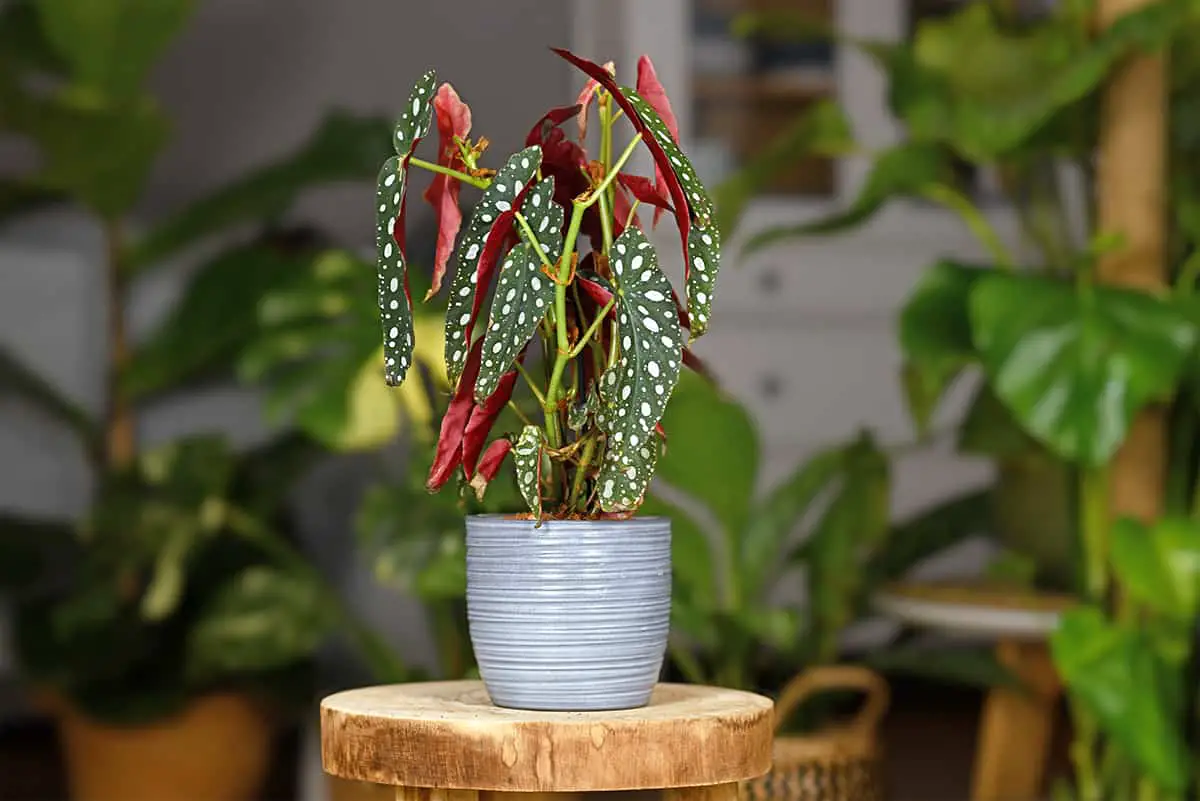You’ve just set up a cozy reading nook by the window and now you’re thinking of adding a touch of nature to enhance the ambiance. Begonia maculata, with its striking polka-dotted leaves and elegant white blooms, could be the perfect companion. This plant isn’t just a pretty face; it’s also relatively easy to care for, thriving with moderate light and humidity, making your new space both chic and vibrant. Learn all about this stunning plant in this article.
| Common Name | Polka dot Begonia |
| Botanical Name | Begonia maculata |
| Family | Begoniaceae |
| History & Origin | Native to Brazil |
| Plant Type | Perennial, houseplant |
| Mature Size | Up to 5 feet tall |
| Sun Exposure | Bright, indirect light |
| Soil Type | Light, well-draining, rich in organic matter |
| Soil pH | Slightly acidic |
| Temperature | Prefers 65-75°F (18-24°C) |
| Watering | Allow topsoil to dry between waterings |
| Fertilizing | Monthly during growing season, balanced fertilizer |
| Bloom Time | Spring to fall |
| Flower Color | White with yellow centers |
| Hardiness Zone | Typically grown indoors |
| Toxicity | Toxic to pets |
| Common Problems | Powdery mildew, spider mites |
Table of Contents
Light
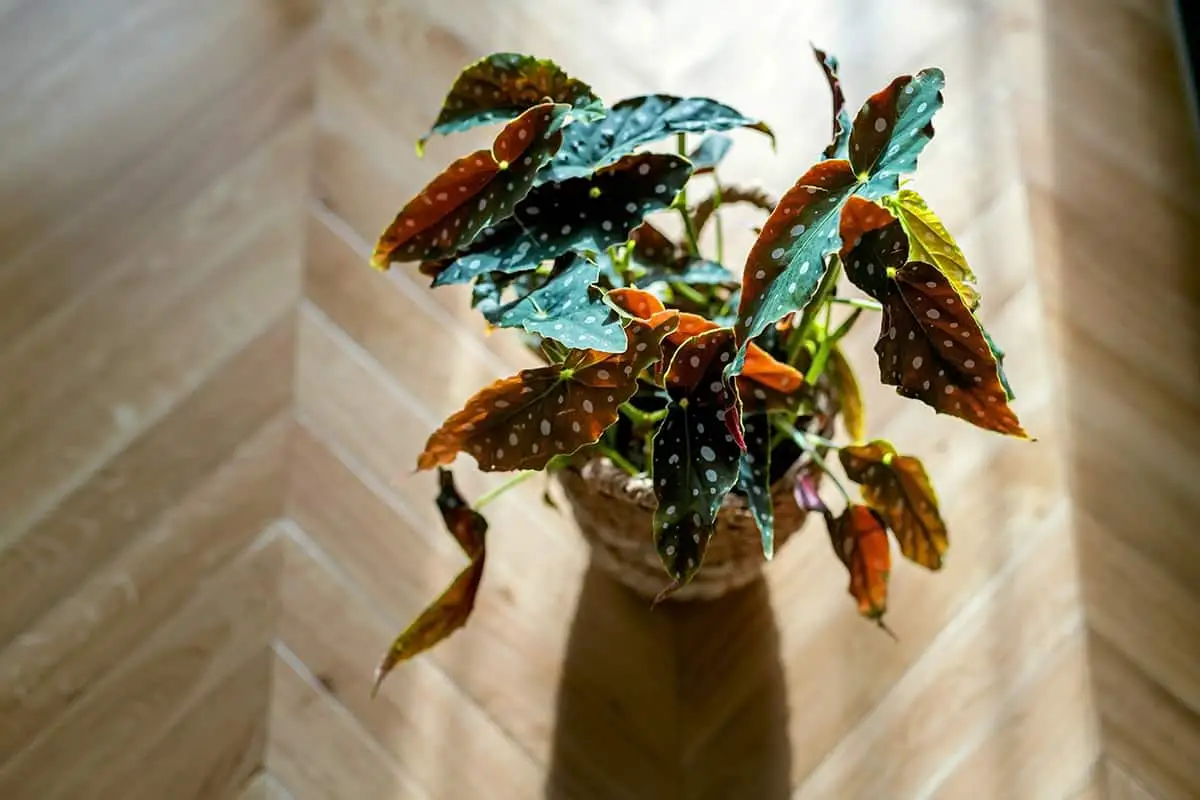
Your Begonia Maculata will thrive in bright, indirect light. Position your plant near a window with filtered sunlight. Too much direct sun can harm its delicate leaves, causing them to scorch and develop unseemly brown spots.
East-facing windows are an ideal place to keep your Begonia Maculata. They receive gentle morning light that won’t be too harsh for the plant. If you only have access to south- or west-facing windows, use sheer curtains or blinds to reduce the intensity of the sunlight. This precaution will ensure your begonia remains healthy and vibrant.
Finally, remember to rotate your plant regularly. This step helps achieve even growth and prevents your Begonia Maculata from leaning towards the light source.
Soil
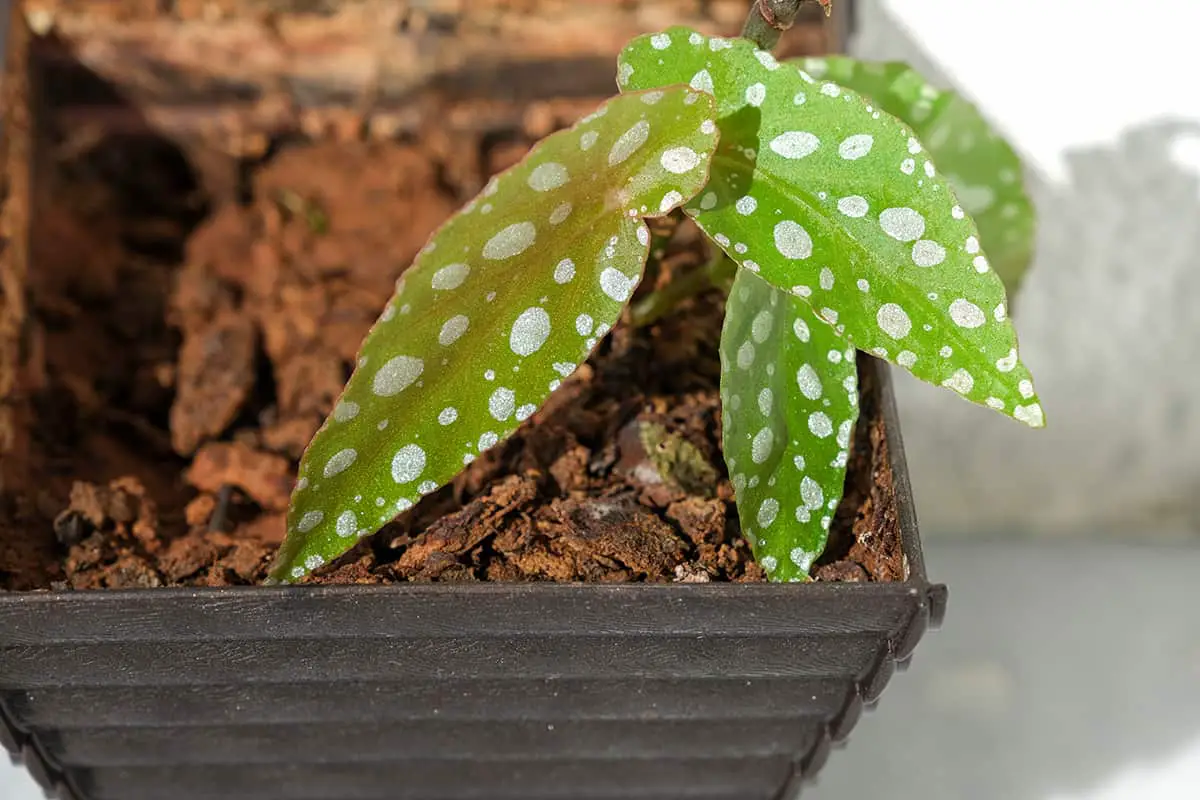
When growing Begonia Maculata, it is crucial to choose the right soil for optimal growth. A well-draining, airy mix of ingredients provides the best environment for their roots. To achieve this mixture, combine equal parts of peat moss, perlite, and potting soil.
This combination provides aeration, retains moisture, and also prevents the roots from rotting due to waterlogging. In addition, maintaining the right pH is essential—you should aim for a slightly acidic level, ideally between 5.5 and 6.5. You can use a soil pH tester to ensure that the acidity is within the ideal range.
Proper fertilization also plays a critical role in maintaining vibrant and healthy Begonia Maculata. To fulfill their nutritional needs, administer a balanced, water-soluble fertilizer with equal parts nitrogen, phosphorus, and potassium. Feed your begonias every two to four weeks during the active growing season for best results.
Water
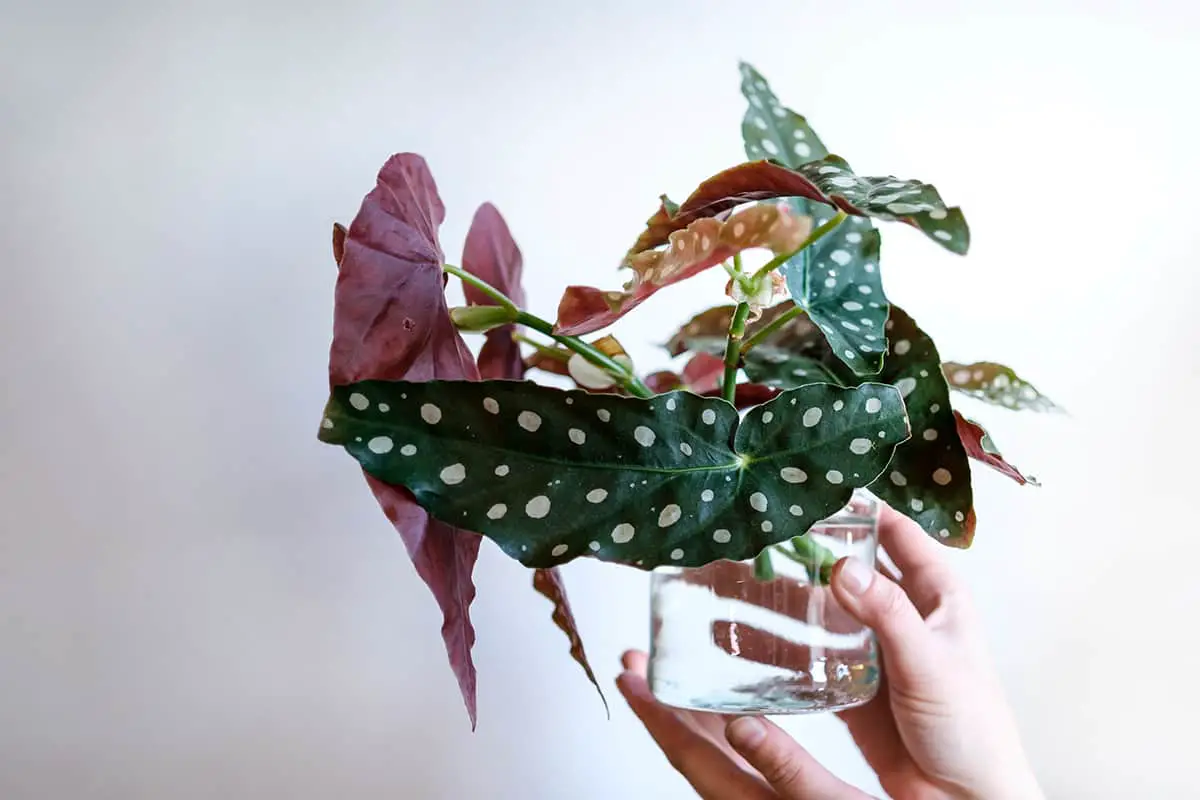
Your Begonia Maculata needs consistent moisture for healthy growth. However, it’s crucial not to over-water them, as their roots are prone to rotting in wet soil.
Water your plant thoroughly when the top inch of the soil feels dry. Make sure you’re using well-draining soil, and avoid letting the plant sit in standing water. A good practice is to empty the saucer under the pot after watering, which helps prevent root rot.
Temperature and Humidity
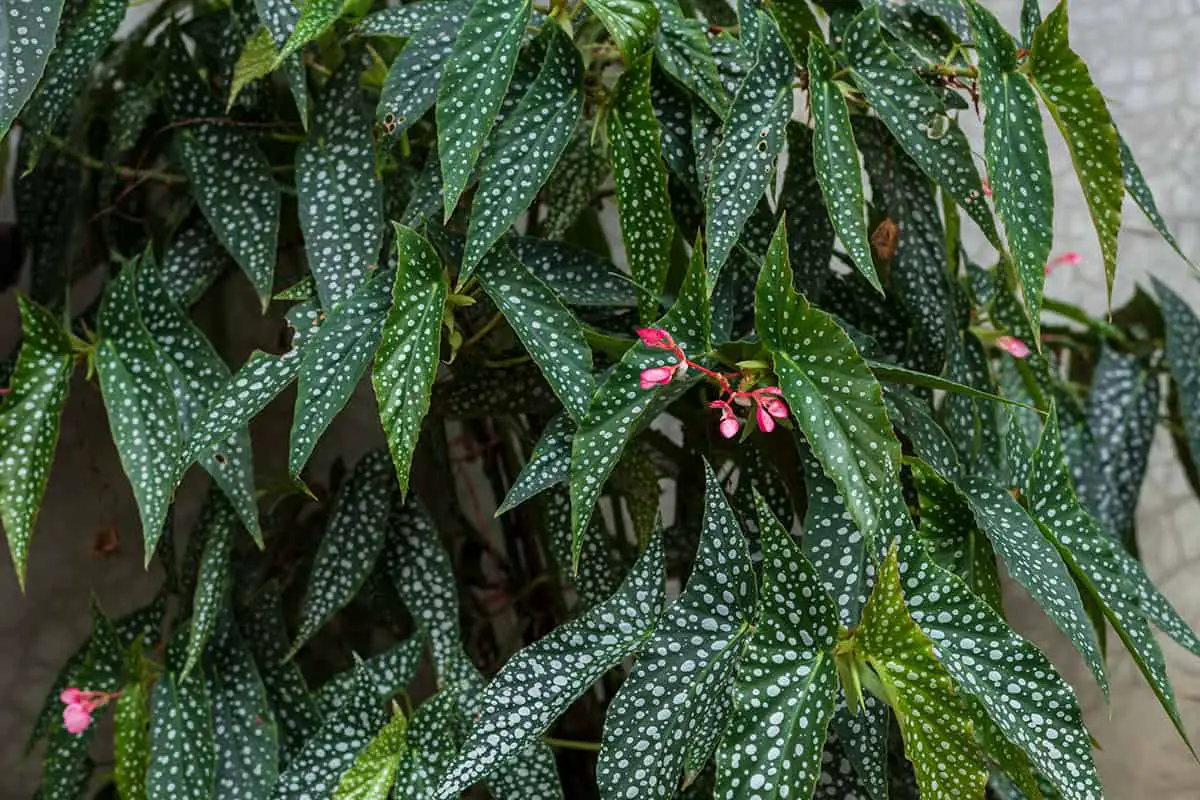
Your Begonia Maculata will appreciate a warm environment with consistent humidity. Ideally, maintain the temperature between 60-80°F to provide the best conditions for your plant. At night, a slightly cooler setting is preferred, around 65-70°F.
To achieve the appropriate humidity levels, you can utilize different methods. Placing a water tray near your plant or using a humidifier are effective ways to create a humid atmosphere. Additionally, consider grouping your Begonia Maculata with other humidity-loving plants to mutually benefit from the shared moisture content.
Keep in mind that while these plants prefer moist conditions, avoiding over-watering and excessively wet soil is crucial. Root rot can occur if the soil remains saturated for extended periods.
Fertilizer
To ensure healthy growth, it is essential to use a balanced fertilizer. Aim for a fertilizer with equal amounts of nitrogen, phosphorus, and potassium. Start by applying fertilizer once a month during the plant’s active growing season.
For best results, it’s recommended to use a half-strength solution to avoid overfeeding. By mixing the fertilizer at half the suggested rate, you can gently maintain your Begonia Maculata’s growth. When applying the fertilizer, dilute it with water to make sure it gets distributed evenly. This ensures the plant will receive adequate nutrients without the risk of burning the roots.
It’s essential to keep your Begonia Maculata’s soil moist but not soggy. Over-watering can lead to rotting roots and fungal problems. To maximize nutrient absorption, ensure the soil is moist before applying the fertilizer. This will allow your plant to uptake the nutrients efficiently.
Propagation
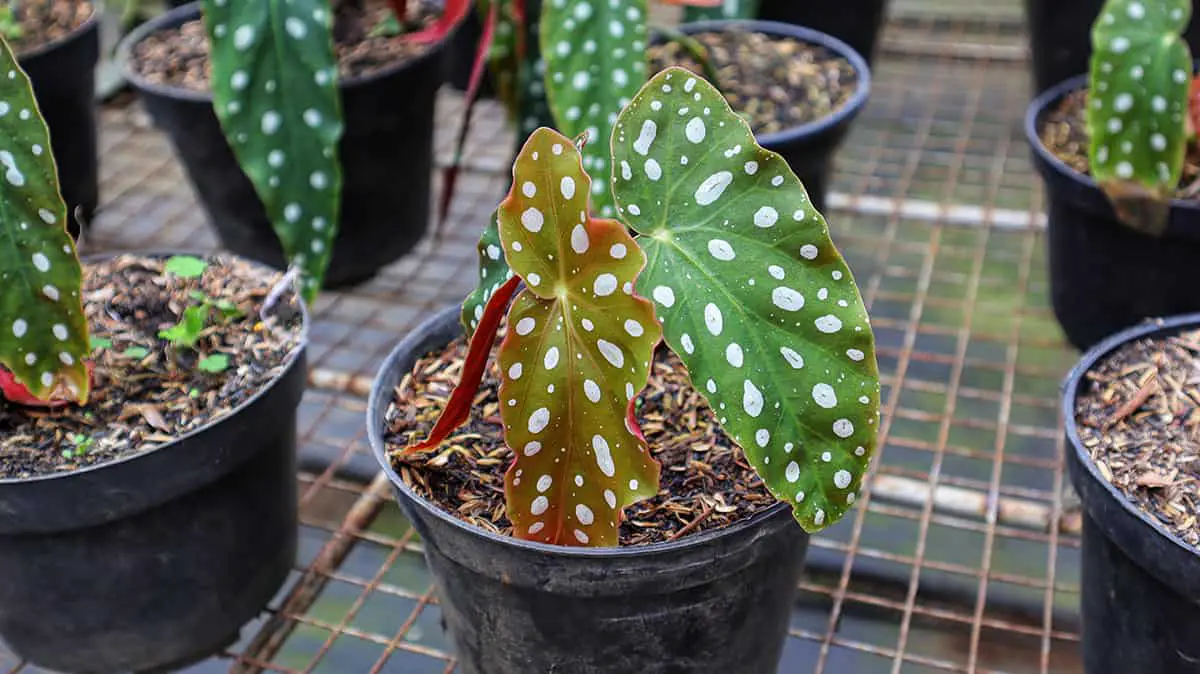
To begin propagating your Begonia Maculata, there are two primary methods: vegetative and seed propagation.
For vegetative propagation, you’ll need to start by taking stem cuttings or leaves from a healthy parent plant. Make sure to use clean and sharp gardening shears or scissors. When choosing a section, opt for a healthy stem cutting with at least one leaf node, or a robust, mature leaf. Place the cutting or leaf in a container filled with cultured soil or a specialized propagation medium, ensuring that the end is adequately covered. Keep the environment humid and maintain appropriate moisture levels, and in a few weeks, you should see roots forming.
On the other hand, seed propagation involves planting Begonia Maculata seeds in a specific germinating medium. Remember to plant the seeds on the soil surface without covering them, as they require light to germinate. Use a plastic cover over the seeding tray to maintain a moist environment. Generally, seeds will germinate in about two to six weeks, depending on temperature and other conditions.
Once your Begonia Maculata plantlets have developed a healthy root system and a few leaves, it’s time to transfer them to their permanent pots.
Pruning
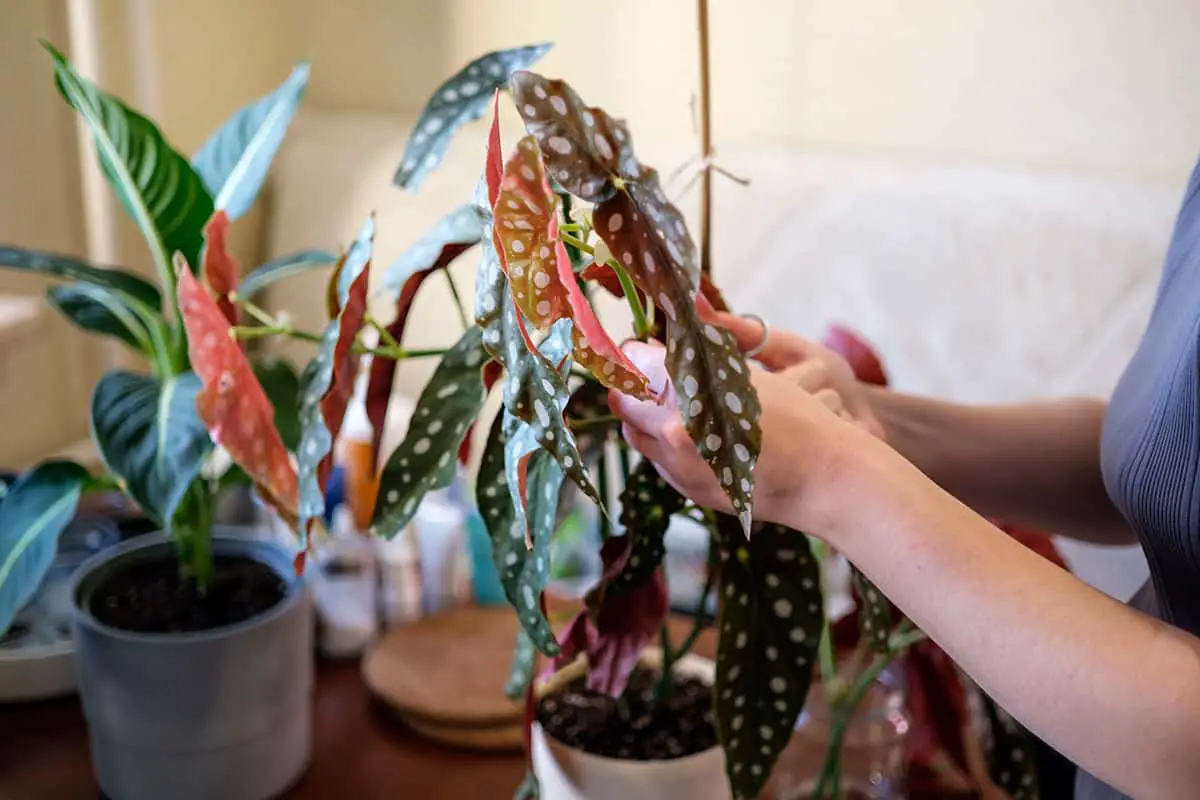
A crucial aspect of maintaining your Begonia Maculata is regular pruning. This process ensures that your plant receives proper ventilation and light, while also encouraging new growth. Let’s explore the basics of pruning your Begonia Maculata.
Observation is the first step in successful pruning. Watch for signs of overcrowding or yellowing leaves, as these indicate the need for intervention. To begin, equip yourself with clean, sharp cutting tools to remove unwanted branches and leaves without causing damage. Remember, your goal is to create an open framework for your plant, allowing air and light to reach all parts.
Remove dead or damaged foliage early on to prevent the spread of disease and pests. It’s important to act promptly – cut away any afflicted branches or leaves by making clean cuts down to healthy growth. The ideal time to remove damaged foliage is during the growing season, promoting quicker recovery.
For optimal air circulation, prune some branches lower to the ground and focus on the interior of the plant. This approach allows fresh air and sunlight to reach the inner sections, resulting in a healthier Begonia Maculata. Be cautious about over-pruning; moderation is vital to maintain the balance between light and shade.
Pinching back is a beneficial technique, especially for leggy, elongated stems. By pinching back the tips of new growth, you encourage branching and bushier development – leading to a fuller, more attractive plant.
Potting and Repotting
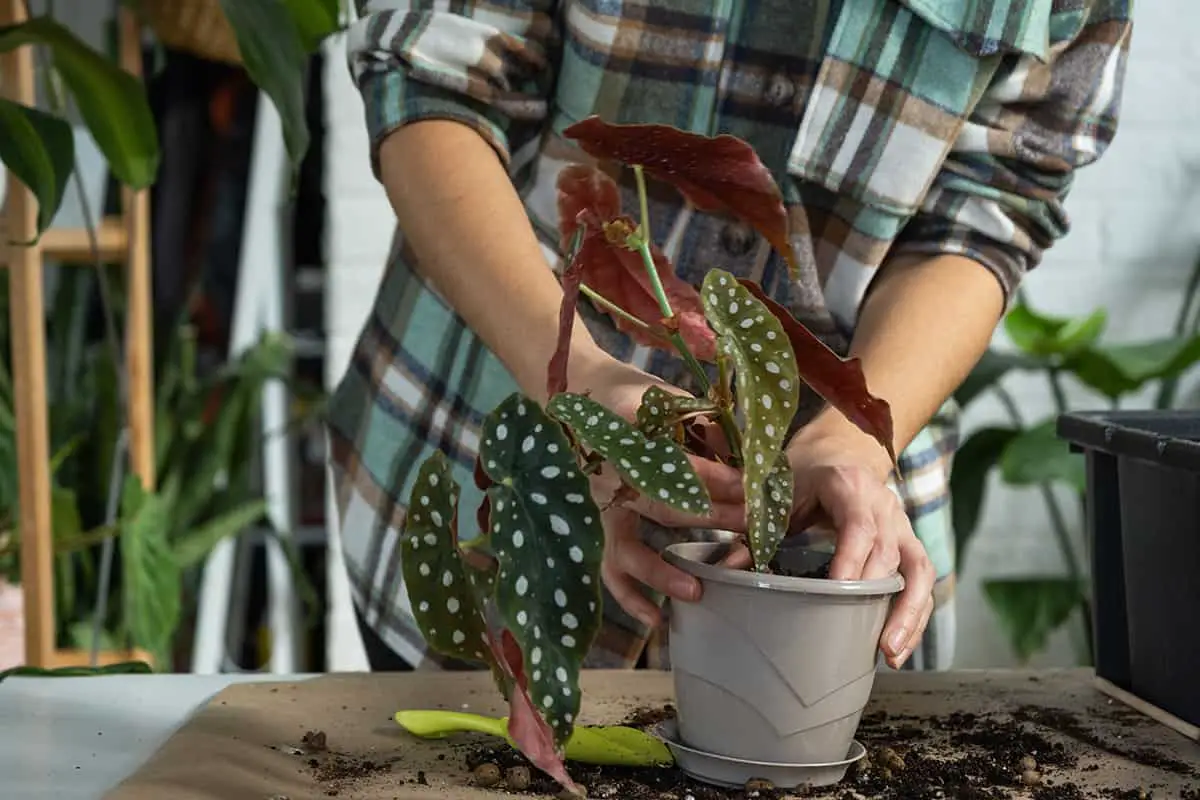
When you first bring home your begonia maculata, choose a suitable container with drainage holes to promote healthy growth. Utilize a well-drained potting mix to fill your container, as this will help prevent root rot and encourage proper air circulation around the roots.
Repotting your begonia maculata is essential when it becomes root-bound or has outgrown its current pot. It’s best to repot in the spring, as this is when the plant is actively growing and can recover from the stress of repotting with greater ease. To repot, carefully remove the plant from its old container, gently shake off any excess soil attached to the roots, and place it in a clean container with fresh potting mix.
Keep the temperature at a comfortable 66 to 73 °F during the day, with nighttime temperatures not dropping below 55 °F. During cooler months, growth may slow down, so be aware that temperatures below 60°F might require slightly less care. Make sure to water your plant moderately and maintain the proper moisture level – not too wet nor too dry.
Common Problems & Troubleshooting
When growing Begonia Maculata, you may encounter some common issues. One of the most frequent problems is overwatering, which can lead to root rot. To avoid this, make sure to water your plant only when the top inch of the soil is dry.
Another issue you might face is the appearance of powdery mildew on the leaves. This fungal disease appears as white, powdery patches on the surface of leaves. You can prevent it by providing proper ventilation and avoiding high humidity around your begonias.
Pests, such as aphids and spider mites, can also be a nuisance for your Begonia Maculata. These tiny insects suck the sap from the plant’s leaves, causing them to wither and eventually die. Keep a close eye on your plant and, if you spot any pests, treat the plant with insecticidal soap or neem oil.
Begonia Maculata Varieties to Grow
When deciding to grow Begonia Maculata, it’s crucial to choose the right variety for your garden.
Begonia Maculata ‘Wightii’
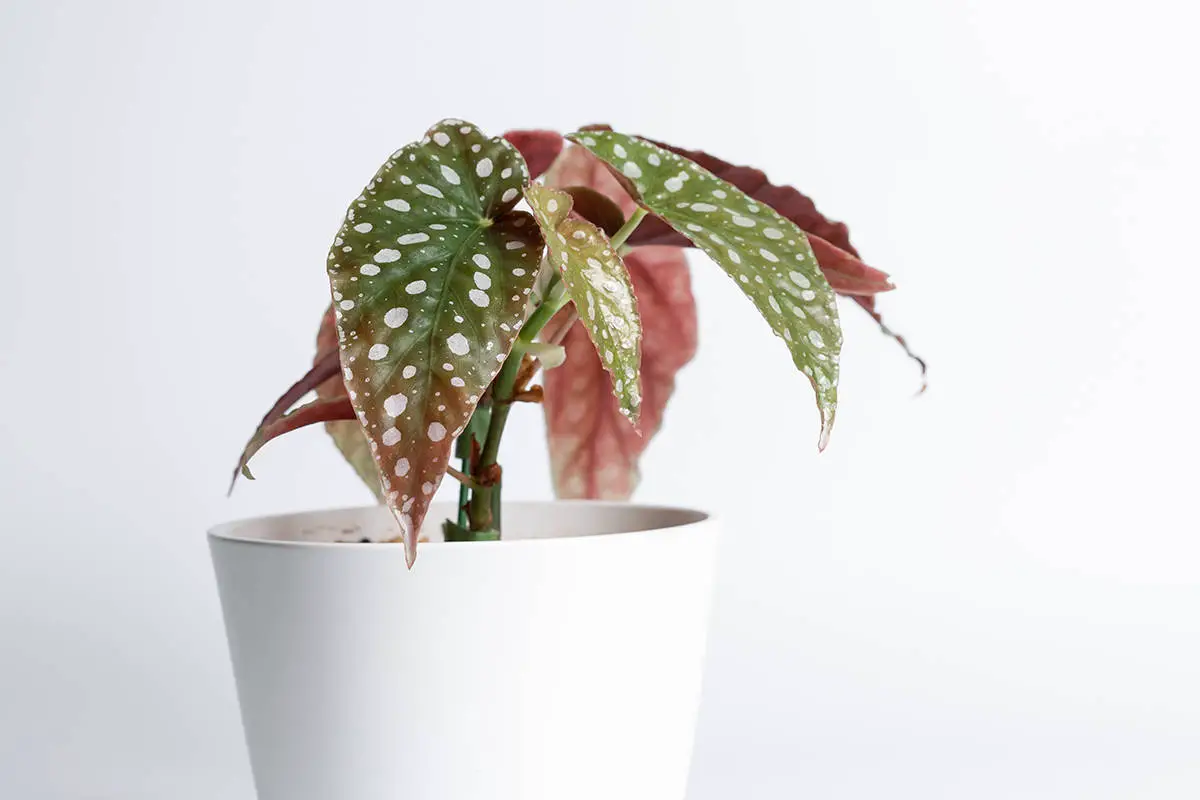
The Begonia Maculata ‘Wightii’ is known for its striking silver polka-dotted leaves and red undersides.
Begonia Maculata ‘Tamaya’
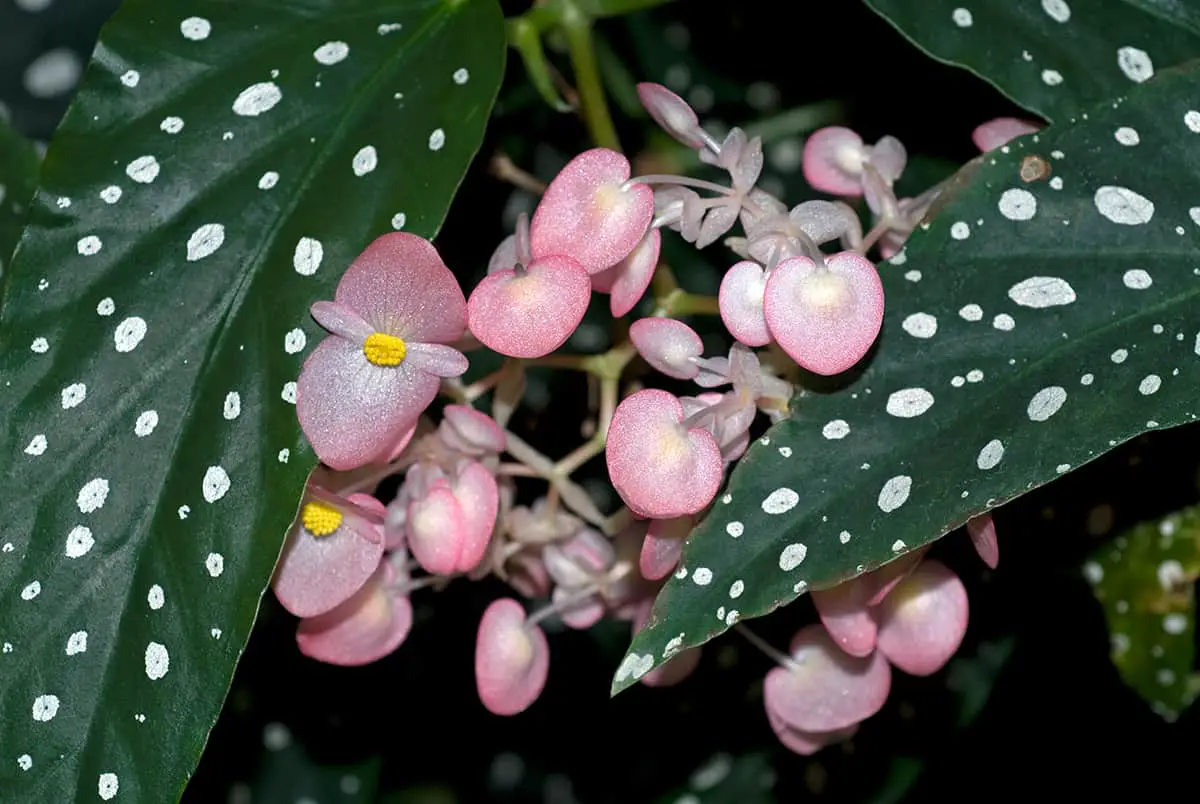
Begonia Maculata ‘Tamaya’, also called the Bamboo Begonia, is a versatile variety that grows well both indoors and outdoors. It has green leaves with white spots and produces clusters of pink flowers.
Begonia Maculata ‘Pink Splash’
The Begonia Maculata ‘Pink Splash’ is a colorful variety with pink splotches on its green leaves and crimson-colored undersides. It is an excellent choice for adding a pop of color to your garden or indoor space.
Begonia Maculata ‘White Ice’
The Begonia Maculata ‘White Ice’ is a unique variety with leaves featuring white spots on a dark green background. The undersides of the leaves are purplish-red.
